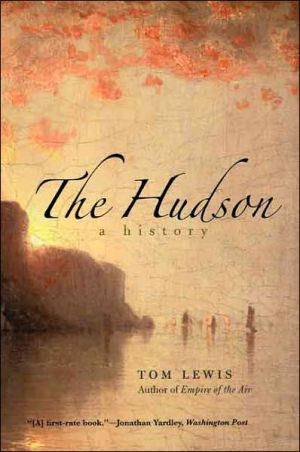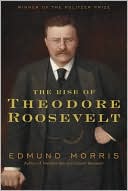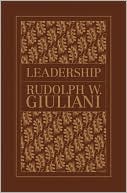The Hudson: A History
The Hudson River has always played a vital role in American culture. Flowing through a valley of sublime scenery, the great river uniquely connects America’s past with its present and future. This book traces the course of the river through four centuries, recounting the stories of explorers and traders, artists and writers, entrepreneurs and industrialists, ecologists and preservationists—those who have been shaped by the river as well as those who have helped shape it. Their compelling...
Search in google:
A vivid history of the Hudson River and how it has fired the American imagination for four hundred years The Washington Post - Jonathan Yardley … it is especially good to have Tom Lewis's new history, which tells the river's story in full without scanting the folk tales and legends *#8230; [a] first-rate book.
The Hudson\ A History \ \ By Tom Lewis \ YALE UNIVERSITY PRESS\ Copyright © 2005 Tom Lewis\ All right reserved.\ ISBN: 0-300-10424-3 \ \ \ \ Chapter One\ The River and the Land \ The landscape of the Hudson is a giant palimpsest, a great parchment on which the hand of nature has written and rewritten her bold signature for more than a billion years. As we look upon the nearly vertical cliffs of New Jersey's Palisades from Manhattan's Riverside Park, or take in the view of Rip Van Winkle's Catskill Mountains from the shore of Robert Livingston's Clermont estate in Columbia County, or step across the swift waters of the Opalescent River on the slope of Mount Marcy, we see just the top layer of writing on the land of the Hudson.\ A closer inspection reveals traces of earlier scripts. When the last glacier scraped across the land less than twenty thousand years ago, it garbled the order of the writing one last time, leaving fragmentary codes of the past that scientists have been struggling to understand.\ A shell heap left on the shore of the Hudson by Native Americans perhaps ten thousand years ago tells us that humans have contributed their own writing to the landscape. In the last four hundred years our writing has become more violent. We have blasted marble from Mount Pleasant in Westchester County for buildings and monuments in New York, Albany, and the great Sing Sing State Prison at the water's edge; we have dug enormous deposits of clay from the riverbanks for brick making; we have added hundreds of acres of land to the shores of the lower Hudson at Manhattan Island and New Jersey; we have dredged a wide channel for deep-ocean vessels to penetrate northward as far as Albany; we have erected forts along the riverbanks, including the great citadel at West Point; and we have deposited huge amounts of contaminants, including polychlorinated biphenyls (PCBs), mercury, garbage, and human waste, into the water. Each of our actions has changed the surface of the landscape.\ For many the Hudson we see today appears to be two distinct rivers. The first belongs to the mountains. It begins in small Adirondack streams that appear as little more than faint squiggles on maps. The true rising takes place about ten miles southeast of the village of Lake Placid at Lake Tear of the Clouds on the southwestern slope of Mount Marcy, 4,322 feet above sea level. The lake might better be called a pond that depends primarily on runoff from the steep mountain slope above. Its meager outflow at the western end feeds Feldspar Brook. Children who climb to this spot will often use their feet to dam the trickling water, declaring to all the world that they alone have stopped the mighty Hudson.\ Lake Tear of the Clouds is the place where the river's life begins. Surrounded by evergreens and decaying trees, the lake appears a desolate, forbidding, even a prehistoric place. Its water supports no fish and, other than an occasional duck, little wildlife. But as the flow into the Feldspar attests, Lake Tear of the Clouds marks the first generation of the great river.\ Life quickens in the brook. In the space of a mile the waters drop about a thousand feet down a deep declivity to join the Opalescent River. The Opalescent then charts a twisted path between Mount Golden and Cliff Mountain, plunging five hundred feet before broadening at the base of the mountains into a marsh known as the Flowed Land. Along the way, numerous springs make their own small, but pure, contributions to the current. The outflow from the Flowed Land drops about a thousand feet more before joining the outflow of another narrow sliver of water, Sanford Lake.\ Sanford Lake also collects the waters from the slopes of other Adirondack peaks-Mount Adams, Mount Andrew, and Popple Hill among them-as well as from Lake Sally to the east and Henderson Lake to the north. It is the mile-long outflow connecting Henderson and Sanford lakes that cartographers have designated as "the Hudson River."\ In its first fifty miles, the Hudson drops an average of sixty-four feet each mile. From Sanford Lake the river flows south and east while taking in a number of creeks, as well as the Indian, Schroon, and Sacandaga rivers; and it drops over a number of falls, including a fifty-foot plunge at Glens Falls. The waters head eastward to Hudson Falls and then turn due south through Fort Edward, Schuylerville, Stillwater, and Mechanicville. Still more tributaries, including the Battenkill, Fish Creek, and the Hoosic River, join the Hudson on its way to Troy. There the river meets its greatest tributary, the Mohawk, which more than doubles its volume. South of Troy the waters broaden dramatically for their final 150-mile journey to the sea.\ This second river, often called the lower Hudson, is actually a fjord, a deep-valley channel where the fresh waters from the north and west mix with the tidal waters of the Atlantic Ocean. Indeed, this part of the Hudson is actually a long and broad tidal estuary. The scenery ranks with the most dramatic in North America. This is the river that lured countless artists to settle on its shores, attracted always by its extraordinary beauty.\ Other tributaries, including the Esopus, the Catskill, the Wallkill, and the Croton, feed the second Hudson. The Catskill Mountains dominate the western shore, while to the east and well back from the water's edge lie the gentler hills of the Taconic range. At West Point the valley narrows to fifteen hundred feet. On the western shore opposite Yonkers and the northern part of Manhattan Island the land rises to form a sheer cliff known as the Palisades. At the southern tip of Manhattan, the Hudson merges with the East River at the Upper Bay before slipping through the Narrows between Brooklyn and Staten Island into the Lower Bay, and, ultimately, the Atlantic Ocean.\ In the lower Hudson salt and fresh waters in the fjord battle for dominance. In seasons of drought the salt tides force their way as far north as Poughkeepsie, while spring freshets push the salt line below West Point. Even the winds of the valley are in contention. Atlantic breezes blowing north up the valley from New York harbor subside when they meet the cooler climate of the Highlands at Iona Island. There salt water and warm breezes from the Atlantic contend with fresh waters and cool winds from the north to determine from season to season the species of plants and fish that will live there. Arrowroot and pinweed thrive to the south, while black spruce and bog moss flourish to the north.\ The relatively straight path of this lower Hudson never failed to impress Europeans in the seventeenth and eighteenth centuries. It seemed so different from the rivers they knew: the Danube that rises in Germany and winds its way across Austria, Hungary, and Romania before emptying into the Black Sea; or the Rhine that has so many twists, turns, and deflections in its course from Switzerland through Germany and Holland that at one point it flows east rather than west before it finally discharges its waters from the Alps into the North Sea; or the Dälaven that begins in the mountains on the Norwegian border with Sweden and cascades over falls and rapids flowing southeast in a circuitous fashion to the Baltic Sea.\ "Why does this river go on in a direct line for so considerable a distance?" the Swedish naturalist Peter Kalm wondered when he sailed up the Hudson in June of 1749. Kalm was taken with the length of the Hudson's reaches, those straight stretches of water between two bends or points.\ The Dutch called them "racks," and in many cases they still bear names given them in the seventeenth century. Captains sailing north from Manhattan Island encounter the Great Chip Reach, bordered on the west by the cliffs of the Palisades; it extends from Weehawken to about Yonkers. From there they pass into the Tappan reach, the Tappan Zee of today. At Croton Point they meet the Haverstraw Reach, which extends to Stony Point. From the vantage at Stony Point sailors can see three and a half miles across the bay, making the Hudson seem more like a lake. The next four reaches-Seylmakers, Crescent, Hoge's, and Martyr's-challenge sailors. They lie in the Highlands where the currents, the winds, and the river's depth can be treacherous. So deep and narrow is the passage here that Herman Melville chose it as a metaphor of Captain Ahab's "deepeningly contracted" lunacy: "like the unabated Hudson, when that noble Northman flows narrowly, but unfathomably through the Highland gorge."\ The next reaches-Fisher's, Lange Rack, Vasterack, and Claverack-fall between Storm King Mountain and the city of Hudson and are relatively long. But from Hudson north to Albany, the reaches, including Backerack, Jan Playsier's, and Hart's, become shorter as the navigable river narrows to restrict the vision of sailors. The Hudson of these last reaches is dominated by marshlands, or "flats," and islands, including Coxsackie, Rattlesnake, Houghtaling, and Lower and Upper Schodack.\ The geological forces that made the first marks upon the great landscape of the Hudson began over a billion years ago in the Grenville orogeny, the oldest mountain-building period. We see evidence of those forces in the ancient metamorphic and igneous Precambrian rocks of the high-peak region of the eastern Adirondacks. Even to geologists, who talk of years in terms of tens and hundreds of millions, these rocks are very old. They should have worn away hundreds of millions of years ago, yet they are still rising at the rate of about three centimeters a year, as though a great cyclopean fist continues to push from beneath the surface to raise still higher the great peaks we call the Adirondacks.\ It wasn't until the middle of the twentieth century that plate tectonic theory enabled geologists to explain the twists and contortions of the landscape. About 1.3 billion years ago, a slow tectonic collision of the continents of North America, Africa, and Europe folded, compressed, heated, and broke the rocks into high ancestral Adirondack peaks, towering mountains that rose perhaps fifteen miles from their base, three times the height of Mount Everest. Erosion over the next 650 million years wore those peaks down to a relatively flat layer of Precambrian root rocks.\ And all the time the continents were in a great slow-motion dance of separation and collision. Separation allowed the sea to flood in and deposit sediments, which became the sedimentary rocks, limestone, shale, and sandstone that we see today around the edges of the Adirondack dome. But then the continental plates collided once again to create more mountains and a supercontinent. About 220 million years ago they split apart once more to create North America, the Atlantic Ocean, Europe, and Africa much as we know them today. About 65 or 75 million years ago, the giant fist began to push upward, eventually forcing those ancient, billion-year-old root rocks of the Adirondacks into the mountains of today. On the slopes of those high peaks cascading streams have eroded channels in the softer sedimentary rocks. Among those streams are the ones that feed the Hudson.\ In the tidal estuary of the lower Hudson, especially in the Highlands, nature's hand twisted the land in similar ways. The same separation of the continents that created the Atlantic Ocean helped to set the Hudson's course. But the landscape has been so changed that even today geologists can't agree completely on the events that shaped the valley. Most believe that beginning about 475 million years ago, as the entire coast lay under a sea that steadily deposited the detritus of algae and other ancient forms of life, the crusts of the continents collided again to deform and metamorphose the Precambrian rocks of the Grenville orogeny, and fold and uplift them with immense pressure and temperature into the schist, gneiss, slate, and marble that we can find in the Catskills, the Highlands, and the Palisades on the west side of the river and the Taconic range on the east side.\ These mountain-building periods are difficult to interpret. We see signs of great metamorphic events in the durable granite-rich hills and mountains lining the river like North Beacon, Breakneck, Storm King, Bear, and Dunderberg, as well as in the weaker marble belts of Mount Pleasant behind Sing Sing. In Central Park, Manhattan's eight-hundred-acre bay window onto millions of years of the past, the boulders of Manhattan Schist are also evidence of mountain building.\ Still, the geologic evidence is difficult to interpret. At the cliffs near Peekskill, in the midst of the metamorphic rock, an igneous intrusion of nearly black norite granite and nearly white Peekskill Granite appears. Its writing upon the landscape is more recent, perhaps about 435 million years ago. These granites are 40 million years younger than the rocks around them. The evidence of Manhattan and the Palisades opposite the island is similarly confusing. It suggests a splitting of the continents 220 million years ago. The Hudson River cleaves the landscape at the point of the split.\ The most recent rending of the land occurred about an hour ago in geologic time. Roughly 22 million years ago the earth's climate began to cool; by about 2 million years ago the path of the Hudson Valley lay under a thick sheet of ice that covered even the high peaks of the Adirondacks. At times the glacier advanced; at others it receded; and each time it left its mark upon the landscape. The last ice sheet, the Wisconsin, culminated about 20,000 years ago. It had the greatest impact on our present land, eliminating and reworking earlier glacial deposits. It was possibly 350 feet thick, exerting extraordinary pressure that actually flattened the land. The Atlantic Ocean was perhaps 400 feet lower than today, exposing about 100 miles of the continental shelf. The receding sheet eased the pressure on the land, allowing it to rise, with the result that the valley of the Hudson that had been created over a hundred million years earlier became both wider and deeper.\ As the southern edge of the Wisconsin ice sheet receded, glacial ice also flowed south to create an immense terminal moraine of sand and gravel that we know as Long Island. Today the Hudson passes from the Upper to the Lower Bay through the Narrows, but this wasn't always the case. The moraine of Long Island once extended west, damming the waters from the glacier to create Glacial Lake Hudson. The lake very possibly extended northward to the Tappan Zee and spilled through the Sparkill Gap into New Jersey. Into this glacial lake streams and rivers often deposited layers of sand, gravel, and clay left by the glacier. Glacial Lake Hudson lasted for thousands of years before the force of the water finally cut a path through the Narrows to the ocean. Today we see unmistakable signs of this geologic event in the clays, sands, and sediments like those found at Croton Point, where the present-day Croton River meets the Hudson.\ The narrow passage of the Hudson through the Highlands that we see today did not exist under the Wisconsin ice sheet. At that point a barrier of rock arose as the ice retreated to create another huge lake-Glacial Lake Albany-that extended from the Highlands northward to Glens Falls and westward into the region of the lower Mohawk valley. Again, streams and rivers that emptied into the lake marked their union with deposits of sediments. Like Glacial Lake Hudson to the south, Lake Albany scoured its way through the metamorphic rock barrier at the Highlands to complete the river's present course to the sea.\ (Continues...)\ \ \ \ \ Excerpted from The Hudson by Tom Lewis Copyright © 2005 by Tom Lewis. Excerpted by permission.\ All rights reserved. No part of this excerpt may be reproduced or reprinted without permission in writing from the publisher.\ Excerpts are provided by Dial-A-Book Inc. solely for the personal use of visitors to this web site. \ \
Introduction11The River and the Land102Explorers and Traders373The Colonizers Arrive564The Valley Transformed935The Only Passage1256The Democratic River1507Definers of the Landscape1868River of Fortunes2259Twentieth-Century Waters254Notes283Acknowledgments315Index317Map of the Hudson River valleyMap of Livingston and Rensselaer family lands100
\ Jonathan Yardley… it is especially good to have Tom Lewis's new history, which tells the river's story in full without scanting the folk tales and legends *#8230; [a] first-rate book.\ — The Washington Post\ \ \ \ \ Library JournalThe Hudson is regarded by Lewis (English, Skidmore Coll.; Empire of the Air: The Men Who Made Radio) as a river of utility, individuality, community, and symbol. After a short discussion of its geography, he provides an overview of its place in history, pointing out that his book is not comprehensive but, rather, a survey of the most influential people and events associated with the river. The stories told here cut across the territorial, military, industrial, social, and cultural history of the United States. Lewis begins with explorers such as Henry Hudson and details the role of the Dutch East India Company in the early colonization of the region. During the American Revolution, the Hudson River valley was strategic to victory: Washington maintained strong Continental forces there, and Benedict Arnold's betrayal took place there. By 1825, the Erie Canal connected the Hudson with Lake Erie, and thus the coast to the interior, a route later made obsolete by the railroads that ran along the Hudson's shoreline. Washington Irving's writings and Thomas Cole's paintings gained inspiration from the Hudson River valley. Franklin Delano Roosevelt found it was a pleasant refuge from the stress of his office. For any public or academic library needing a short history of the region, this is a readable book that might fill a hole in the collection. (Index not seen.)-Grant A. Fredericksen, Illinois Prairie Dist. P.L., Metamora Copyright 2005 Reed Business Information.\ \ \ From the Publisher"Water, per se, is not that interesting but rivers highlight and emphasize the land and lives and ideas that cram their banks. What Tom Lewis has so wonderfully done here is willed to life one of the great rivers in our history, insisting that it offer up its deep secrets and best tories." --Ken Burns\ \ \ \ \ \ Ken Burns“Water, per se, is not that interesting but rivers highlight and emphasize the land and lives and ideas that cram their banks. What Tom Lewis has so wonderfully done here is willed to life one of the great rivers in our history, insisting that it offer up its deep secrets and best stories.”—Ken Burns\ \ \ \ \ Kenneth T. Jackson"Few places in America can match the beauty, the majesty, and the historic significance of the Hudson River. Thanks to Tom Lewis's elegant style, penetrating observations, and marvelous illustrations, we at last have a book worthy of such a grand topic."—Kenneth T. Jackson, Editor of The Encyclopedia of New York City\ \ \ \ \ New York Post"No book I know so beautifully interweaves history, art, writing and commerce."—Robert Richman, New York Post\ \ \ \ \ \ New York Sun"The book is packed with information and free of pedantry, a perfect introduction to the region.”—Brooke Allen, New York Sun\ \








